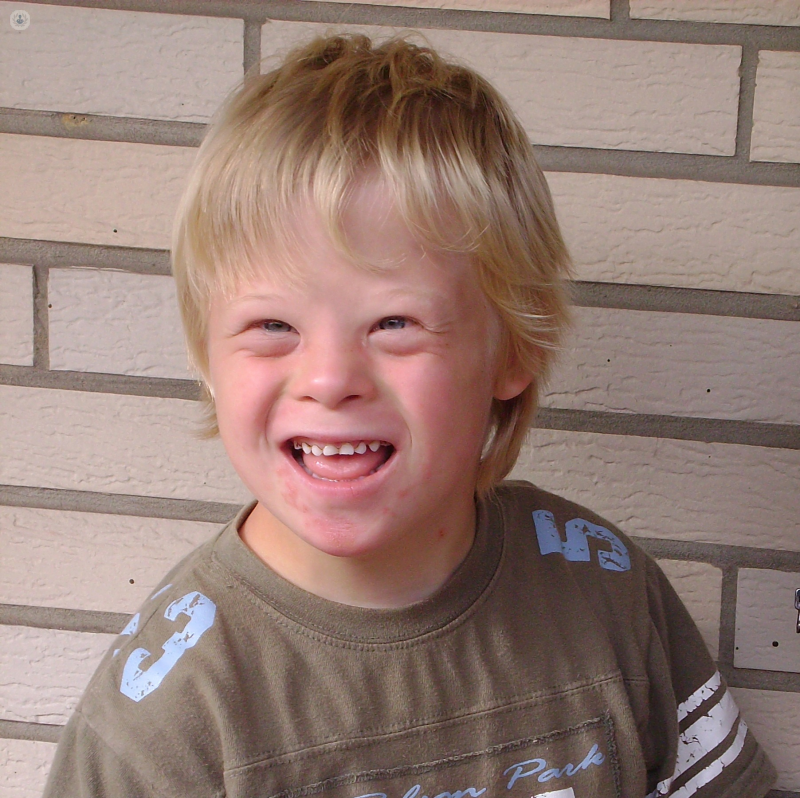

What are congenital malformations?
Congenital malformations are defects or abnormalities in the baby's body that develop during pregnancy. There are more than 4000 types of congenital malformations, and they are categorised into two main groups:
- Structural congenital malformations: Those in which the baby is born without a part of the body or they have a malformation in that part. Within this group, the most frequent are cardiac congenital anomalies, as well as cleft palate, congenital hip dysplasia, spina bifida or clubfoot.
- Functional congenital malformations: Refers to when there is a problem in the chemical composition of the body, as happens with those that affect the nervous, metabolic or immune system. The most well-known are Down’s syndrome, deafness, blindness, congenital hypothyroidism or Tay-Sachs disease.

Prognosis:
According to figures from the World Health Organization, every year 303,000 new-borns die during the first 4 weeks of life, due to congenital malformations. However, many of these diseases can be avoided if they are detected early during pregnancy.
There are many degrees of severity in congenital malformations, with some not requiring treatment, whereas others may need treatment and monitoring for a few years or for life, or even require emergency surgery. The reality is that congenital malformations represent an important cause of infant mortality, disabilities and chronic diseases.
Due to advances in medicine, congenital malformations occur in very few cases. On the other hand, since many of them are rare or uncommon diseases, they represent a major challenge for thousands of families, who are far more helpless when facing an unknown disease.
Symptoms of congenital malformations:
When a baby is in the womb and presents anomalies it does not cause symptoms in the mother, so the only way to detect them is to carry out a correct pregnancy follow-up and genetic and prenatal studies.
On the other hand, the symptoms that cause congenital anomalies in the new-born are very diverse depending on the malformation and the degree that it presents. Some malformations are unnoticeable or allow a totally independent life, whilst others are disabled or require lifelong treatment.
Medical tests for congenital malformations:
The majority of diagnostic tests for congenital malformations are usually performed during pregnancy in the check-ups that the expectant mother must perform with the specialist. An ultrasound allows the gynaecologist to check the development of the foetus, which can detect a large number of congenital malformations: for example, it can detect Down’s syndrome during the first trimester of pregnancy or serious foetal anomalies up until the second trimester.
Amniocentesis is another of the key tests that allows the detection of congenital malformations, such as neural tube defects or chromosomal abnormalities during the first two trimesters of pregnancy.
On the other hand, before a pregnancy it is also recommended that the couple should perform genetic testing to know the risk they have of having a baby with congenital anomalies, as some are hereditary.
What are the causes of congenital malformations?
Most of these malformations are of unknown origin, but several factors have been detected that may be related to the development of several of them:
- Genetics of the parents
- Abuse of certain types of drugs
- The age of the mother
- Illnesses that the mother suffers during pregnancy
- Diet and health care done during pregnancy
Can congenital malformations be prevented?
Specialists in gynaecology, obstetrics and healthcare organisations such as the World Health Organization recommend a series of primary prevention measures for congenital malformations:
- Take care of the woman's diet during pregnancy, with the necessary contribution of vitamins and minerals such as folic acid.
- Avoid the consumption of toxic or harmful substances such as tobacco, alcohol and recreational drugs.
- Control diabetes.
- Avoid exposing yourself to toxic or dangerous substances, such as pesticides.
- Avoid exposure to radiation and medication intake as much as possible.
- Improve vaccination, especially against the rubella virus.
Treatments for congenital malformations:
Many congenital malformations can be corrected or improved with paediatric surgery, even during pregnancy. In other cases, new-borns may need pharmacological treatment from birth or even undergo emergency operations to save their lives. The treatment that each patient will need will vary depending on their malformation or congenital pathology, as well as their development.
What specialist treats congenital malformations?
Gynaecologists and obstetricians who carries out pregnancy check-ups are usually the first to detect any congenital malformations. A paediatric surgeon can intervene in the treatment of some malformations, just as the paediatrician will be the specialist in charge of monitoring and assessing the baby after birth. Other specialists, such as speech therapists or psychologists may also be involved in the treatment of congenital malformations.
